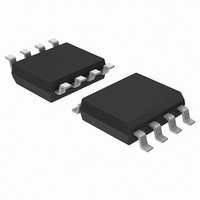STCN75M2E STMicroelectronics, STCN75M2E Datasheet - Page 19

STCN75M2E
Manufacturer Part Number
STCN75M2E
Description
IC TEMP SENSOR DIGITAL SO-8
Manufacturer
STMicroelectronics
Datasheet
1.STCN75M2F.pdf
(37 pages)
Specifications of STCN75M2E
Featured Product
STM32 Cortex-M3 Companion Products
Function
Temp Sensor, Watchdog
Topology
ADC (Sigma Delta), Comparator, Register Bank
Sensor Type
Internal
Sensing Temperature
-55°C ~ 125°C
Output Type
I²C™/SMBus™
Output Alarm
Yes
Output Fan
No
Voltage - Supply
2.7 V ~ 5.5 V
Operating Temperature
-55°C ~ 125°C
Mounting Type
Surface Mount
Package / Case
8-SOIC (0.154", 3.90mm Width)
Full Temp Accuracy
+/- 3 C
Digital Output - Bus Interface
Serial (2-Wire, I2C)
Digital Output - Number Of Bits
9 bit
Maximum Operating Temperature
+ 125 C
Minimum Operating Temperature
- 55 C
Ic Output Type
Digital
Sensing Accuracy Range
± 0.5°C
Temperature Sensing Range
-55°C To +125°C
Supply Current
125µA
Supply Voltage Range
2.7V To 5.5V
Sensor Case Style
SOIC
No. Of Pins
8
Rohs Compliant
Yes
Lead Free Status / RoHS Status
Lead free / RoHS Compliant
Available stocks
Company
Part Number
Manufacturer
Quantity
Price
STCN75
3.3
Note:
3.4
3.4.1
3.4.2
3.4.3
Serial interface
Writing to and reading from the STCN75 registers is accomplished via the two-wire serial
interface protocol which requires that one device on the bus initiates and controls all READ
and WRITE operations. This device is called the “master” device. The master device also
generates the SCL signal which provides the clock signal for all other devices on the bus.
These other devices on the bus are called “slave” devices. The STCN75 is a slave device
(see
During operations, one data bit is transmitted per clock cycle. All operations follow a
repeating, nine-clock-cycle pattern that consists of eight bits (one byte) of transmitted data
followed by an acknowledge (ACK) or not acknowledge (NACK) from the receiving device.
There are no unused clock cycles during any operation, so there must not be any breaks in
the data stream and ACKs/NACKs during data transfers. Consequently, having too few
clock cycles can lead to incorrect operation if an inadvertent 8-bit READ from a 16-bit
register occurs. So, the entire word must be transferred out regardless of the superflous
trailing zeroes.
Table 9.
2-wire bus characteristics
The bus is intended for communication between different ICs. It consists of two lines: a bi-
directional data signal (SDA) and a clock signal (SCL). Both the SDA and SCL lines must be
connected to a positive supply voltage via a pull-up resistor.
The following protocol has been defined:
●
●
●
Accordingly, the following bus conditions have been defined (see
Bus not busy
Both data and clock lines remain high.
Start data transfer
A change in the state of the data line, from high to low, while the clock is high, defines the
START condition.
Stop data transfer
A change in the state of the data line, from low to high, while the clock is high, defines the
STOP condition.
MSB
Bit7
Data transfer may be initiated only when the bus is not busy.
During data transfer, the data line must remain stable whenever the clock line is high.
Changes in the data line, while the clock line is high, will be interpreted as control
signals.
Table
1
9). Both the master and slave devices can send and receive data on the bus.
STCN75 serial bus slave addresses
Bit6
0
Bit5
0
Doc ID 13307 Rev 8
Bit4
1
Bit3
A2
Bit2
A1
Figure 5 on page
Functional description
Bit1
A0
20):
R/W
Bit0
LSB
19/37













